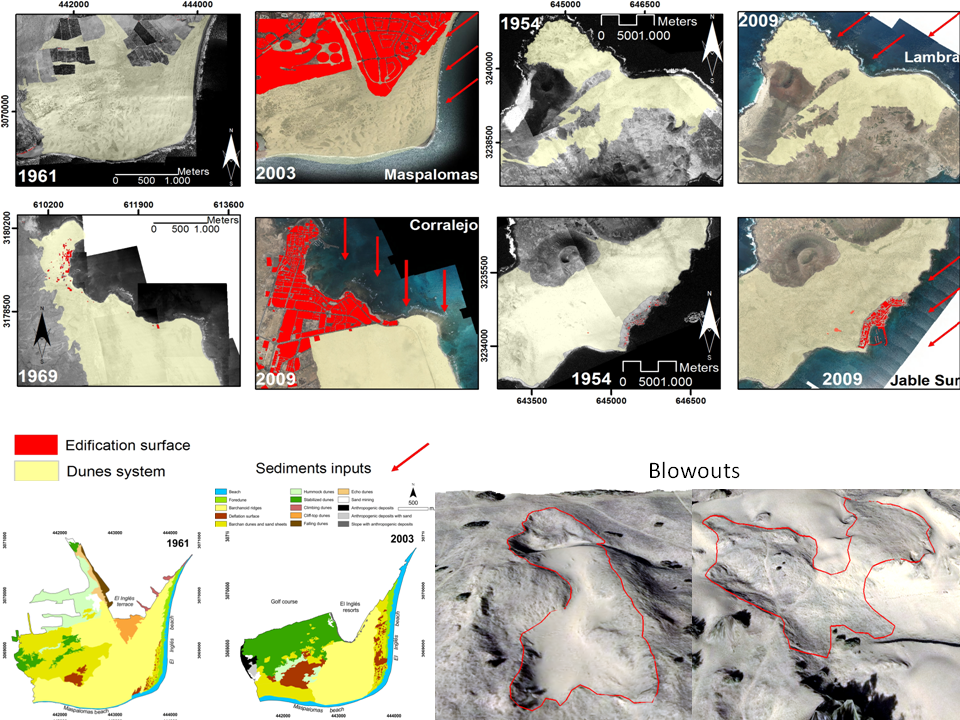Ph.D. Program in Oceanography and Global Change at the Canary Islands, Spain
Aeolian sedimentary systems in the Canary Islands differ from other European and African systems due to climate, vegetation and isolation. In turn, they experience high human pressure from touristic development. As a starting premise we consider that the recent evolution of the vegetation cover on sandy systems (especially on arid ones) is an indicator of environmental changes produced by natural processes or anthropogenic activities. Vegetation on the foredune also provides stability to the coastal dunefields, capturing and accumulating sediments, which is an important function among other ecosystem services.This thesis doctoral analyzes from small scale the impact of urban-touristic development in four aeolian sedimentary systems in the Canaries: Maspalomas, Corralejo, Lambra and Jable Sur from, and from great scale only in Maspalomas, using the vegetation coverage as indicator. Spatial and surface change variables related to vegetation and geomorphology are obtained by Geographic Information Technologies (photo-interpretation of historical aerial photography, current orthophotos, DEMs, CFD, etc.) Results indicate that systems affected by urban touristic development have witnessed significant environmental change. Especially in Maspalomas, changes in the foredune has been detected reducing the nebkhas number and inside the dune system, one blowout and two erosional zones clearly defined since 2003 in the residuary active zone has been detected with relationship by buildings in Playa del Inglés. In future research stays try to treat these relations using Computational fluid dynamics (CFD).




